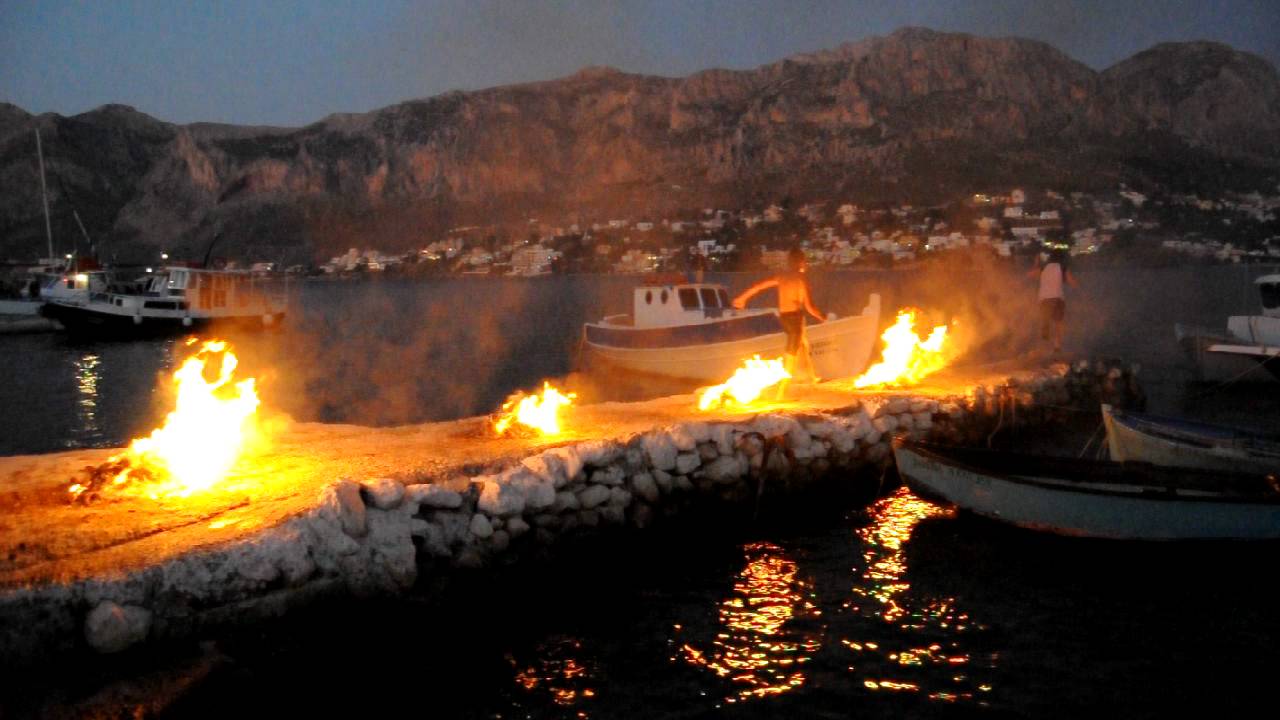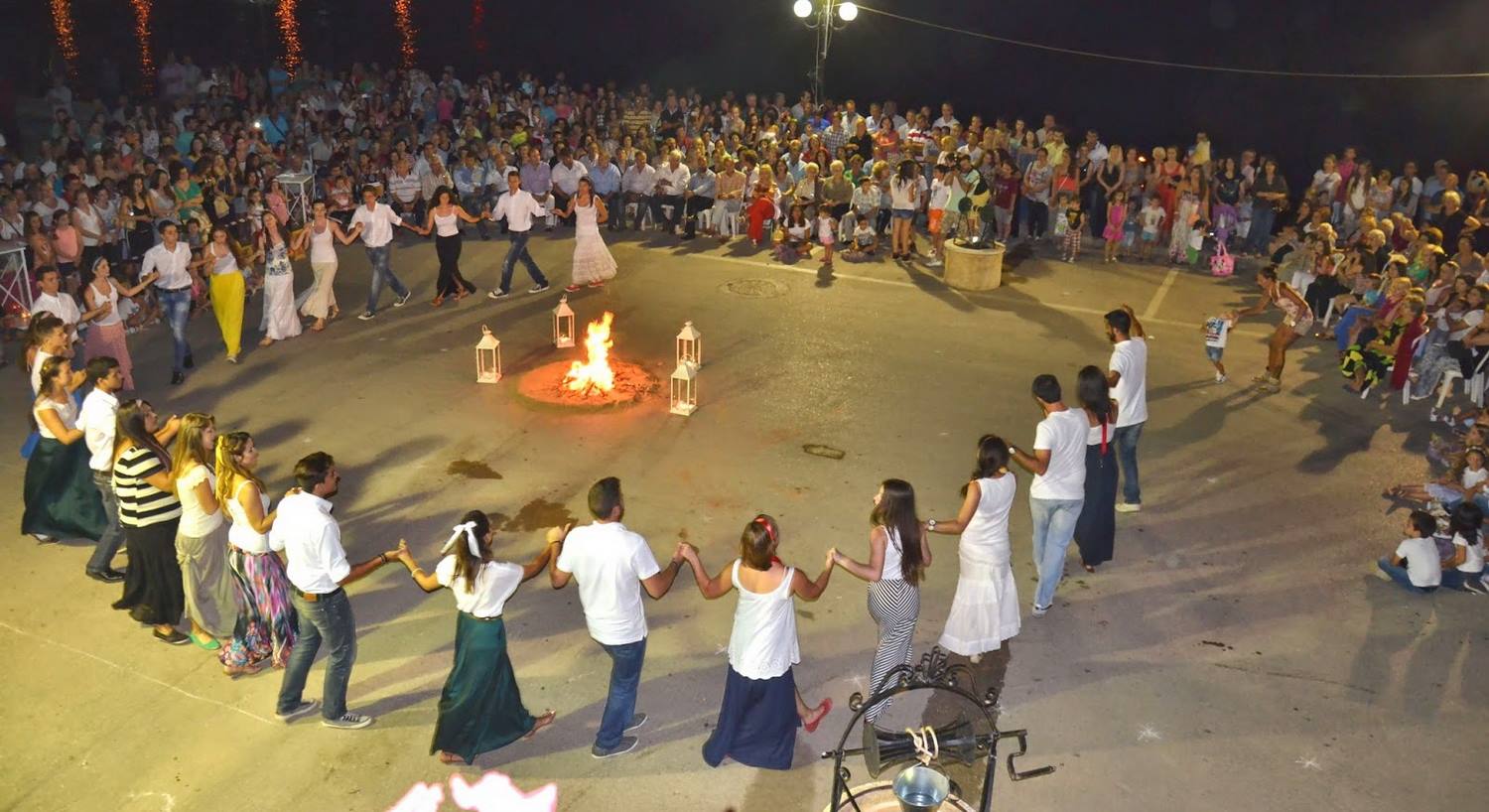The evening of June 23, St. John’s Eve, is typically celebrated in Greece with a huge bonfire that the faithful are called to jump over. The bonfire has its roots in the early days of Christianity. The custom is rooted in the belief that St. John, who lived most of his life in the desert, would light bonfires to destroy thyme bushes where mosquitoes laid their eggs so as to prevent diseases such as malaria. For this reason, he was dubbed by the faithful as the Protector Saint against malaria.
Greeks believe that the bonfire can purge evil. Leaping over it is viewed as an act of faith that is capable of expelling disease and renewing health. People leap while shouting: “I leave the evil year and go to the lucky one!” On the isle of Mytilene they typically say: “As heavy as this stone is, so may my father’s purse weigh.”
In Asia Minor, people made the act of jumping into the bonfire even more challenging by holding an iron rod to their waist as they took their leap of faith. In Tinos, mothers leap over while holding their babies.
Now is the time to take the May wreaths placed on doors and balconies on May 1 and throw them into the bonfire.
Another custom practised on this day is that of Kledones that allow young girls to visualize who they will marry. When the bonfire dies down, young women fill pots from the fountain with “silent water” – they cannot speak until they reach their destination. The pot is filled with personal items such as rings, keys, etc. They then sing:
Open the Kledonas by St. John’s grace,
that the one who is fortunate may come and get it.
Open the Kledonas and set the velvets,
for the King and Queen to pass,
Reopen it again for the graceful to come out,
who fights against castles and wins.”
A young child draws the Rizikaria. Not knowing who the owner of each item is, she picks out their pieces and tells their future eg. “this one will marry a rich man”, “this one will travel”, etc.
TO TAKE PART IN THE FESTIVITIES:
The tradition is common at most villages around Greece.
In Athens, people can see the tradition at Eleftherias Square, Koumoundourou Street, Athens Center at 8 p.m. on Tuesday.
The feast will also take place at Nea Filadelfeia-Halkidona, a northern suburb of Athens at 8 p.m. on Tuesday. The bonfire will be at Konstantinopoleos Square, Kato Kouklaki, Nea Filadelfeia. The Kledona tradition takes place at 8 p.m. on Wednesday at Gennimata Square (Eirini).







































